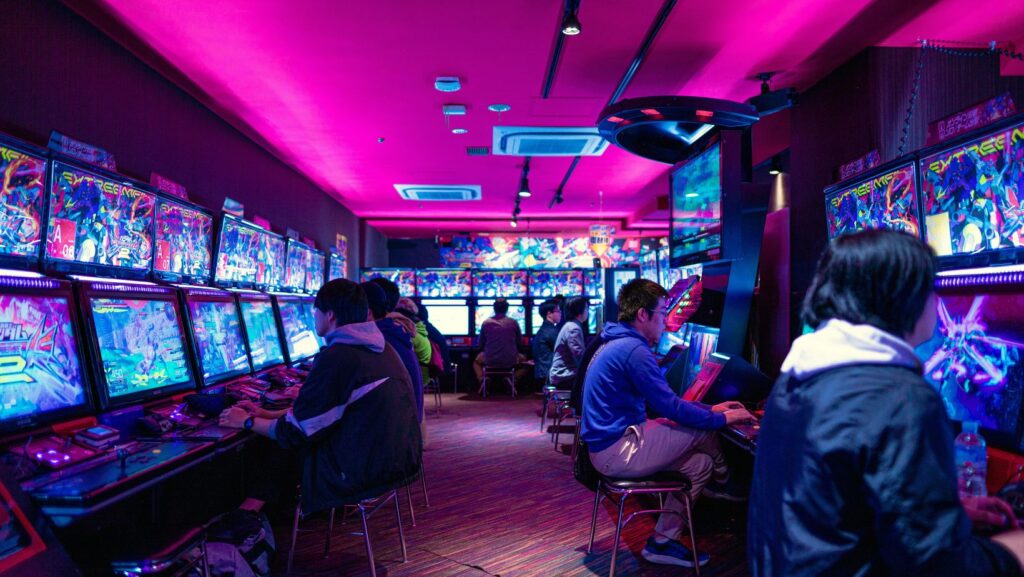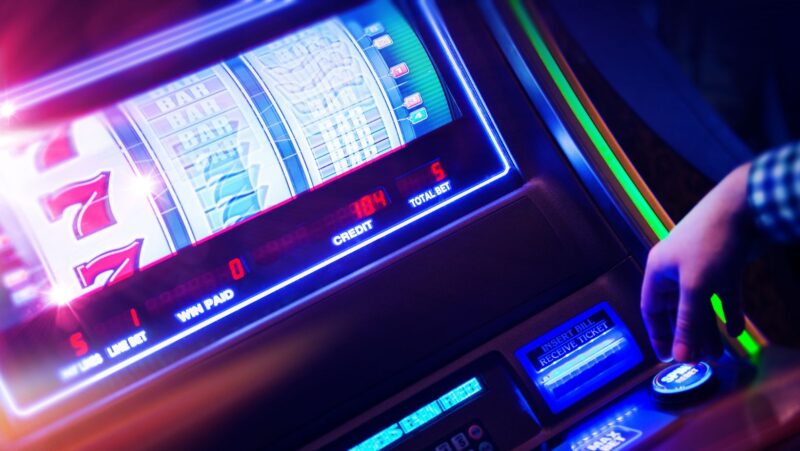
Before the era of high-speed internet and smartphones, gaming was a public, tactile experience. The arcade was so much more than a place to play, it was a social space marked by a specific atmosphere made up of flashing lights, distinctive sounds, and responsive buttons. Every machine was designed to engage, capturing attention as soon as you moved close, drawing you into the action, and keeping you there as long as possible. It was truly about instant results, and control you needed to pilot a spaceship in Galaga or throw a punch in Street Fighter II was all about the immediate feedback you had from the UI.
These design choices were not accidental. The developers of games recognized that arcade visitors would decide to play a machine after brief exposure in the crowded arcade environment. The interface achieved an exciting yet accessible design through clear visual cues and satisfying joystick movements. The same design approach which motivated arcade development would motivate another sector of the gaming industry: the online casino platforms.
From Joysticks to Digital Spins
The digital casino transition required traditional casinos to implement design principles identical to those used in arcades to achieve intuitive gameplay for all user levels.
Online slots also brought some arcade-style visuals and sound with the aim of recreating the excitement found in old-school arcades. There were bright and flashy animations to announce winnings and other forms of flashing visual effects, countdown timers to create a sense of time pressure, and interactive mini-games to break away from the repetitive spinning of standard reels. The transition from lever operation in physical casinos to smartphone button tapping and touchscreen swiping became natural because it duplicated the arcade mechanism of control input triggering instant on-screen responses.

The integration of skill-based bonus rounds within digital slot games demonstrates a common design approach. The gameplay experience in Pac-Man and Space Invaders delivers a feeling that corresponds to the gameplay elements of pattern recognition and quick reactions which affect the game’s results. In the same way, modern slot machines differ from traditional slots by adding interactive elements which allow players to participate actively instead of passively betting.
From a UI/UX psychology perspective, this is no coincidence. The development process depends on two fundamental techniques: variable reward schedules which arcades use to sustain player interest and color-based psychology to generate excitement and anticipation. The UI team employs deliberate animation techniques to produce suspenseful effects when reels decelerate before significant wins occur and these micro-interactions create an illusion of player control even though a random number generator (RNG) determines the game results.
Gamification Meets Accessibility
Online casinos today combine arcade-style interactivity with simplified access for new players to begin their gaming journey. The casino 1$ deposit option provides users with an entry point similar to arcade games that only required one coin to begin playing. Such an affordable start-up cost draws both new players who want to try the platform and existing players who want to spend more time playing.
Online casinos have incorporated competitive elements through leaderboards and achievement badges together with seasonal challenges that replicate arcade competition. Modern casino platforms let players monitor their tournament and event rankings in the same way players used to compete for top scores on arcade leaderboards.
The integration of mobile technology has also made these experiences more personal. Instead of walking into a building full of machines, the casino now fits in your pocket. Push notifications introducing new games or special offers are also like the neon signs of arcade games when people step in for “just one more round.” The combination of an interactive experience based on video games and a heavy application of smart UI/UX psychological principles makes it hard to distinguish between gaming for recreational purposes and gaming for compounded stakes.
From the mechanical clink of coins in an arcade to the instant credit balance updates on a smartphone, the journey of gaming interfaces shows a clear lineage. The principles that made arcade games addictive, simplicity, instant feedback, and sensory stimulation, have found a new home in the world of online casinos. The stakes may be different, but the design philosophy is largely unchanged. Both industries strive to deliver the same outcome: An experience that is engaging, easy to engage with, and rewarding enough to ensure that you get return players.












